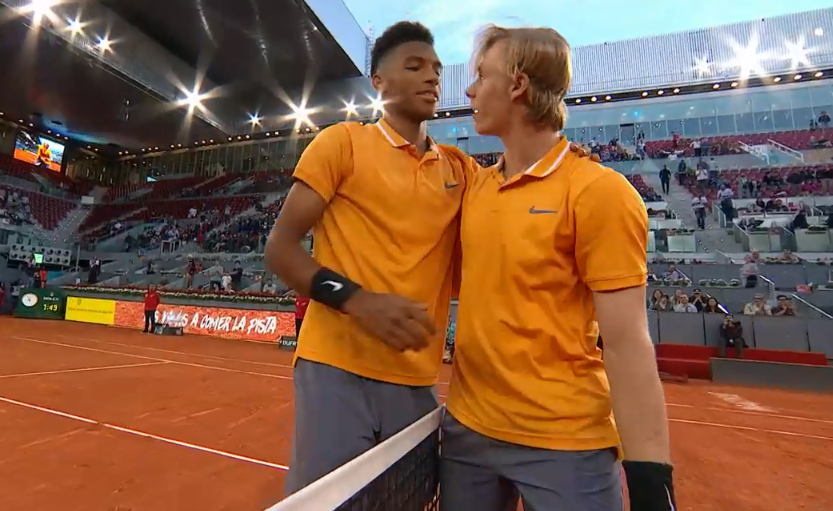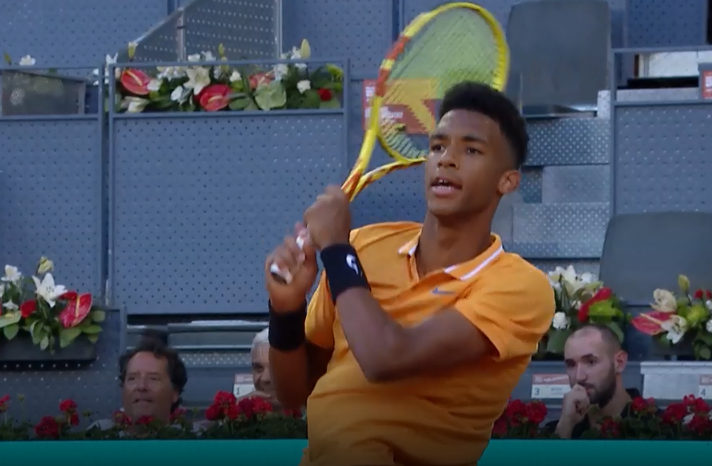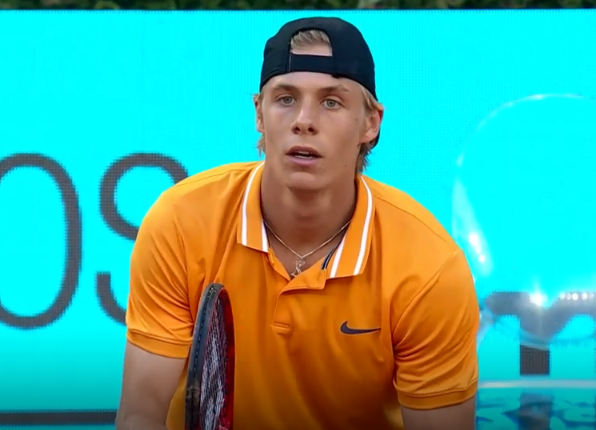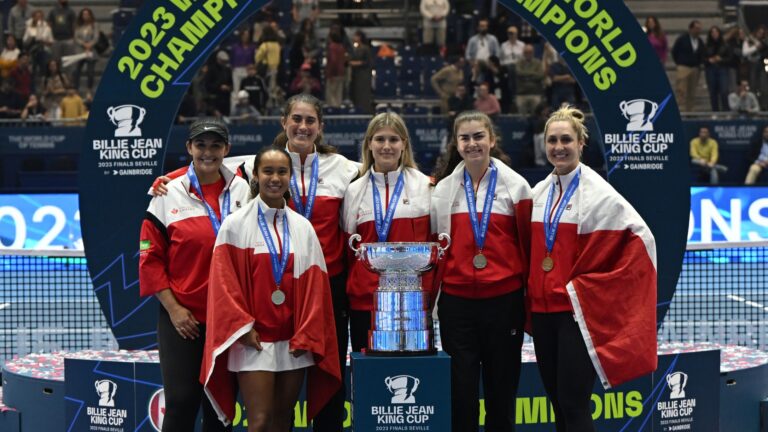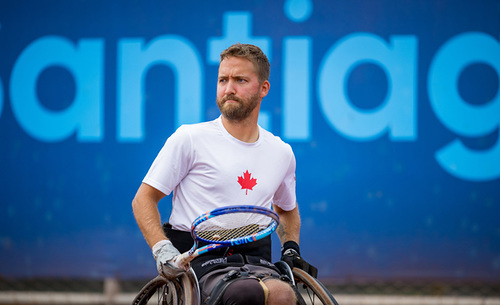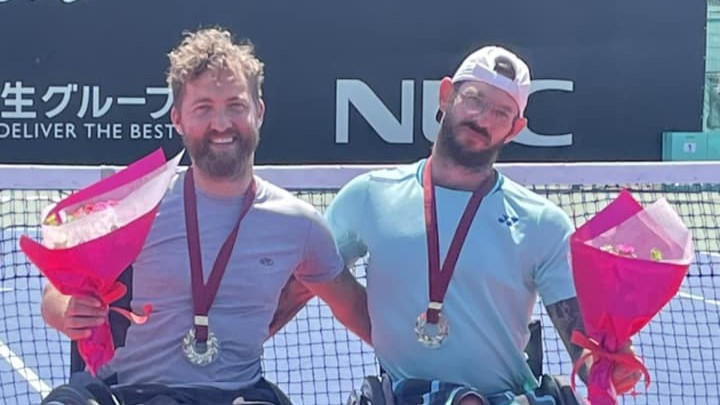
|||||
Roger Federer is at a place in his tennis life where he’s playing with house money.
He has had a splendid renaissance since triumphing at the 2017 Australian Open after going winless in his previous 15 Grand Slam tournaments dating back to the 2012 Wimbledon.
Things got even better for him later in 2017 when he won Wimbledon and then reached a career total of 20 Grand Slam titles after a victory at the Australian Open in 2018.
With him getting back onto clay this week in Madrid (playing Richard Gasquet at 8 p.m. – 2 p.m. ET in Canada on Tuesday), it brings to mind a match on clay that has been the key to his legacy.
That would be his 2009 round-of-16 win over Tommy Haas at the French Open. He went on to win Roland-Garros that year, completing his career Grand Slam – something that has been essential to his place in tennis history.
The match against Haas was loaded with meaning for Federer. It came a day after Rafael Nadal, bidding for a fifth Roland-Garros title in a row, was upset by Robin Soderling. The Spaniard had beaten Federer in the previous four French Opens and, against Soderling, was hampered by a knee issue that would keep him out of action for the next two months.
Federer saw his chance to finally win the French Open – at that point he already had three Australian Open, five Wimbledon and five US Open titles and had been in the three previous Roland-Garros finals.
He played the first two sets against the then-no. 63-ranked Haas like someone who felt the weight of the world because he suddenly had such a glorious opportunity.
Things didn’t improve that much in the third set after losing the first and second sets by scores of 7-6(4), 7-5. He trailed 4-3 and was serving at 30-40 – with Haas a single point from serving for the match.
Federer served to the backhand and Haas’ return landed just past the service line, giving Federer a good angle for an inside/out forehand. He hit it for a winner that landed either on or very close to the sideline.
See video below:
That single point basically swung the match. Federer took over and, losing just two more games, eventually won 6-7(4), 5-7, 6-4, 6-0, 6-2. Had he lost that day, one of the following players would have been the 2009 French Open champion – Soderling, Nikolay Davydenko, Andy Murray, Fernando Gonzalez, Juan Martin del Potro, Tommy Robredo, Gael Monfils or Haas.
Federer would go on to beat Monfils 7-6(6), 6-2, 6-4 in the quarters, del Potro 3-6, 7-6(2), 2-6, 6-1, 6-4 in the semis and Soderling 6-1, 7-6(1), 6-4 in the final.
A title at Roland-Garros ensured Federer’s place among legends who had won all four Grand Slams at that point – Fred Perry, Don Budge, Rod Laver, Roy Emerson and Andre Agassi – and he avoided the fate of a tennis giant like Pete Sampras who never won on the terre battue in Paris.
That Roland-Garros title permanently removed the monkey from the great Swiss’ back. He subsequently reached only one more Roland-Garros final (2011) between 2010 and 2015, a stretch when Nadal won five in a row before being ousted by Novak Djokovic in the 2016 quarter-finals.
But Federer had the missing jewel in the Grand Slam crown and surely deserved it – during his career he reached five finals and one semi-final at ‘the French.’ And every one of the five losses was to incomparable clay-courter Nadal.
So as he returns to clay this week in Madrid, he’s serene – last week telling the New York Times’ Christopher Clarey: “I feel now I can play pressure-free, because what is there to lose? Nothing really. I haven’t played on clay for three years so maybe for the first time in 15 years I can go to the French and be like, ‘let’s just see what happens.’ And maybe that’s exactly what is going to make a beautiful result. And if it’s not, no problem. Then I have more time for the grass, and I still profited from a great buildup, and it made me strong physically, and it’s good for my game.”
Federer-philes will go coo-coo at the thought of a possible title for their man this year at Roland-Garros – and he has to be in the top five or six challengers based on his pedigree alone. If he did win he would separate himself from current rivals Nadal and Djokovic by being the only one of them to have won each Grand Slam tournament at least twice. (The same goes for Djokovic.)
While that’s probably far-fetched, the 37-year-old has surprised before. But in this case it seems almost unimaginable unless injury or poor form removes the obstacles provided by Nadal, Djokovic, Dominic Thiem and others.
Federer’s Grand Slam state of grace can probably be traced back to that inside/out forehand in the third set against Haas in 2009. It’s inexplicable how he hit a shot so close to being out on that vital point, especially because he had missed badly with a forehand on the previous point.
After the match, a reporter was searching for an answer to explain that bold forehand, so perilously close to missing the line – one that likely saved Federer’s quest for what probably will be the only French Open title of his career.
He asked Haas, 31-years-old at the time, hoping for insight as to how a fateful shot like the one Federer hit could have landed good by mere millimetres at such a crucial moment. “We both know there was a chance for me to finish him off,” Haas said. “(You’ve) just got to tip your hat and say, ‘that’s why he’s Roger Federer.’”
It might not have been exactly what the reporter was looking for – but, ultimately, it’s a simple answer that may be the only one that really makes sense.
DENIS & FELIX – MADRID
Many highly-anticipated matchups in sports wind up falling victim to pre-event hype.
Roger Federer vs. Rafael Nadal has sometimes lived up to its billing – Federer 6-4, 3-6, 6-1, 3-6, 6-3 in the 2017 Australian Open final. And sometimes not – Nadal 6-1, 6-3, 6-0 in the 2008 French Open final.
Félix Auger-Aliassime and Denis Shapovalov are fated to play on many occasions over the next decade but so far their two tour matches as professionals have been mildly disappointing – Shapovalov winning 7-5, 5-7, 4-1 ret. at the 2018 US Open when a racing heart rate forced Auger-Aliassime to stop – and Auger-Aliassime prevailing 6-2, 7-6(7) in Sunday’s opening round of the Madrid Open.
Auger-Aliassime won the first set in Madrid with service breaks in the third and seventh games as Shapovalov struggled to find his form.
The second set was more competitive and wound up being decided in a tiebreak on Auger-Aliassime’s fourth match point when Shapovalov steered a forehand well wide.
It was vulnerability on that side that did in Shapovalov – five of the last eight points in the tiebreak were forehand unforced errors.
Simply put, Auger-Aliassime was the steadier player and really only looked vulnerable when Shapovalov broke serve to level at 3-all in the second set and then had a break point to go up 5-3 but hit a backhand service return long.
The service stats for the one-hour-and-49-minute match reveal the clear advantage Auger-Aliassime had – numbers that were going to be hard for Shapovalov to overcome if he was to have any chance to win.
1st serve % 1st serve pts. won 2nd serve pts. won
Auger-Aliassime 69 63 65
Shapovalov 54 59 55
Now Auger-Aliassime gets to measure himself against the clay-court GOAT – Nadal – in Wednesday’s second round, although it’s a Nadal who has shown vulnerability at his previous 2019 clay-court events in Monte Carlo (Fabio Fognini) and Barcelona (Dominic Thiem) and is getting over a stomach virus.
Auger-Aliassime has now won a match at all three European clay-court events he has played this spring – not bad for an 18-year-old. And a tip of the cap to the Montrealer for endearing himself to the Caja Magica spectators on Sunday at the end of his post-match interview, saying to them: “gracias a todos.”
As for Shapovalov, he’s 0-3 at the same three tournaments as Auger-Aliassime – Monte Carlo, Barcelona and Madrid – but will have a chance to get back on track next week in Rome.
Obviously, Félix, 18, is on the rise at the moment, and Denis, just turned 20, is not at his best. But drawing conclusions on this small and ever-changing sample size is foolish. It’s better just to sit back and enjoy the ride. These two young guys should provide Canadians and worldwide tennis fans with lots of enjoyment for many years to come.
A HOT DOG – ALL DRESSED!
During Sunday’s final at the ATP 250 event in Estoril against eventual-winner Stefanos Tsitsipas, no. 67-ranked Pablo Cuevas, 33, of Uruguay, hit a rarely-seen, cheeky shot. View it below – and make sure to watch right to the end.
THE CHEEKIEST WINNER YOU'LL EVER SEE 🤣@PabloCuevas22 is something else..#EstorilOpen pic.twitter.com/ApWN3vdVAo
— Tennis TV (@TennisTV) May 5, 2019

